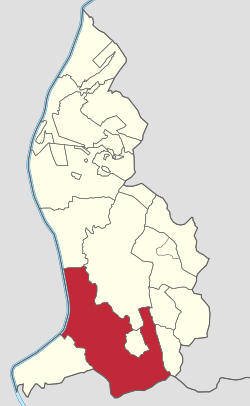Triesen
Triesen (German pronunciation: [ˈtʁiːzn̩] ⓘ) is the third largest municipality in Liechtenstein. It contains several historic churches dating from the fifteenth century. It also has a weaving mill from 1863 that is considered a historical monument. The population is around 5,275.
You can help expand this article with text translated from the corresponding article in German. (December 2009) Click [show] for important translation instructions.
|



